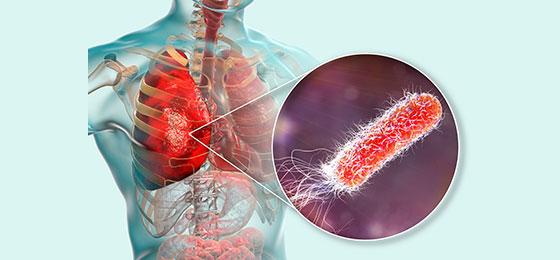Understanding antibiotic tolerance as a basis for the development of diagnostic tools
Some bacteria fall into a kind of deep sleep that protects them from antibiotics. New knowledge can help monitor this phenomenon in the clinic.
Portrait / project description (completed research project)
Treatment failure without development of resistance
Antibiotic-resistant pathogens have changed genetically in such a way that they are no longer affected by some active substances. However, bacteria can defy treatment by alternative mechanisms: they can temporarily fall into a sleep-like state, in which active cell reproduction is halted despite of nutrients being available. Because antibiotics generally interfere with active growth and metabolism, the drugs are now missing their targets and bacteria can survive the treatment. Thus, despite of not being antibiotic-resistant, their sleep-induced tolerance allows them to persist in patients, leading to chronic infections that are difficult to treat.
While all cells of resistant bacterial populations are equally resilient to certain antibiotics, only a small fraction of tolerant bacteria shows sleep-mediated resilience. These so-called persisters are clinically highly problematic as they are generally tolerant against most available antibiotics. So far, no therapeutic interventions effective against antibiotic tolerance and persistence are available, because the respective mechanisms are not well understood. A research team led by Urs Jenal has now succeeded in identifying the underlying principles of tolerance by studying the human pathogen Pseudomonas aeruginosa and its role in chronic infections of patients suffering from cystic fibrosis (CF).
Evolution of antibiotic tolerance observed step by step
The researchers first used laboratory strains of Pseudomonas aeruginosa to investigate how antibiotic tolerance develops when repeatedly exposed to antibiotics, a procedure that mimics situations in chronically infected patients. This revealed genetic, molecular and cellular characteristics of strains that gradually evolved strong tolerance during therapeutic interventions. Importantly, these experiments also made it possible to define precise models for how tolerance, persistence and resistance develop during drug treatment. These observations were then verified and refined by analysing isolates obtained from patients at University Hospital Basel.
Basis for clinical diagnostics
The study provides evidence that during treatment of chronic lung infections in CF patients, antibiotic tolerance evolves and spreads early on and that this may contribute to a chronic development of the disease. In addition, the researchers were able to show that antibiotic tolerance in Pseudomonas aeruginosa increases rapidly with repeated exposure to antibiotics and, in turn, promotes the development of resistance.
The information generated in this study about common properties of antibiotic-tolerant human pathogens provides the basis for the development of diagnostic tools and procedures to specifically trace tolerant Pseudomonas aeruginosa variants in the hospital. This, in turn, will make it possible to optimize treatment strategies for chronic infections.
Original title
Tolerance as a potential reservoir for the development of antibiotic resistance

